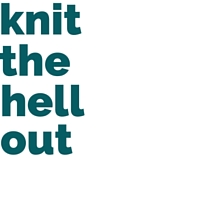Thank you so much for your thoughtful comments on my previous post. I love getting input from others when something is puzzling me about the knitting world (or just the world) and you all gave me several more points to think about with your comments. I don’t plan on writing up a similar hoodie anytime soon, but this is a fun learning process.
I continued making modifications, because I know what I like and I just can’t stop. 
While all of this is happening, this morning I decided it was time to rip back the shawl collar on the design for Matt’s sweater.
For my own sweaters, I just can’t deny that seams and glorious glorious set-in sleeves just fit me best, and I’ll do the extra work necessary to get that fit. I ADORE knitting in the round for the quickness, ease, and reduced finishing, but with some garments, like my Liesl, the knitting in the round gives it a bit of twist when you wear it. When you knit in the round, you’re making one big spiral. Sometimes that spiral becomes evident when you wear the garment.
Seams have another advantage. They keep the garment from sagging over time. This Shine dress might have been saggy over time without the stabilization of seams, especially since it is half cotton. For a Still Light Tunic that I knit, I did a provisional cast on and bound it off at the neck later (since it is a top-down raglan) to help give stability to the dress over time. On occasion, I’ll make a “fake seam” by putting a purl stitch in where a seam might be. I did this on the Treeline Cardigan centered under the armpit. It won’t give your garment extra stability, but in this case it serves as a helpful guide when re-blocking after a wash. I think that’s an Elizabeth Zimmerman technique, but I’m too lazy to hunt down the reference for you all.
I love top-down raglans for the trying-on potential as you knit it, but the shoulders never fit me quite as well. I’m eager to try Blank Canvas to see if this pattern can change my mind about the fit of raglan sleeves. My first set-in sleeve was on Larch Cardigan and that thing fits me better than any other sweater. I’m sold. It’s trickier to design, trickier to seam, but it’s WORTH IT. Trust me, or try it yourself. This video cleared up a lot of questions for me about seaming set-in sleeves.
If anyone wants to test knit for the Dapper Man sweater design, I’m taking volunteers. It’s full of seams and set-in sleeves. I can’t provide compensation aside from singing praises about you and giving you a free pattern, so do it only if you have a fella you’re dying to knit this for. I’m going to try to release the pattern to test knitters by mid September, with a goal of releasing the final pattern by mid-late October, even if test knitters aren’t finished with it at that point. I plan on having chest (in inches) sizes 36 (40, 44, 48, 52, 56, 60). Please email me at cassy AT knitthehellout DOT com if you are interested and let me know which size you would be interested in knitting. I’d like to try to have 1-2 people knitting each size.
I just love geeking out about knitting. Happy knitting!




I would totally test knit if I didn’t have so much going on right now! Lots of Christmas presents to knit, my CAL, and making items to sell in my friend’s craft stall (and that’s just the craft stuff)! Although I think I’d make it as a slouchy sweater for me.
Gotta love a good set-in sleeve love fest.
I would test knit the Dapper Man sweater, but I don’t think it’s something my guy would wear (he’s very wary of cables). It looks fun to knit though!
Please please pretty please make it in smaller, woman sizes too!!!
I would love to make it and wouldn’t mind the manly fit, I’m just not good enough to resize it for myself.
I love Dapper Man, I wish I could test knit it. My little man is keeping me too busy to knit something with a deadline.
Good job!
This Dapper Man sweater is GORGEOUS! I would love to test knit too, but too much on my plate. Really good job!
Reblogged this on Knit It Up and commented:
Test knitters needed. BEAUTIFUL man’s sweater!
Um..can I change my mind about being a test knitter if I make it to Smiley’s?
I can’t test knit due to a lack of a male person over the age of four to knit for, but I did tweet the link. Hopefully you can find some good test knitters. It’s a great sweater.
I aspire to think deeply about knitting!
I’m still at the just-do-it stage. Then put it down for a few months when it all goes horribly wrong : )